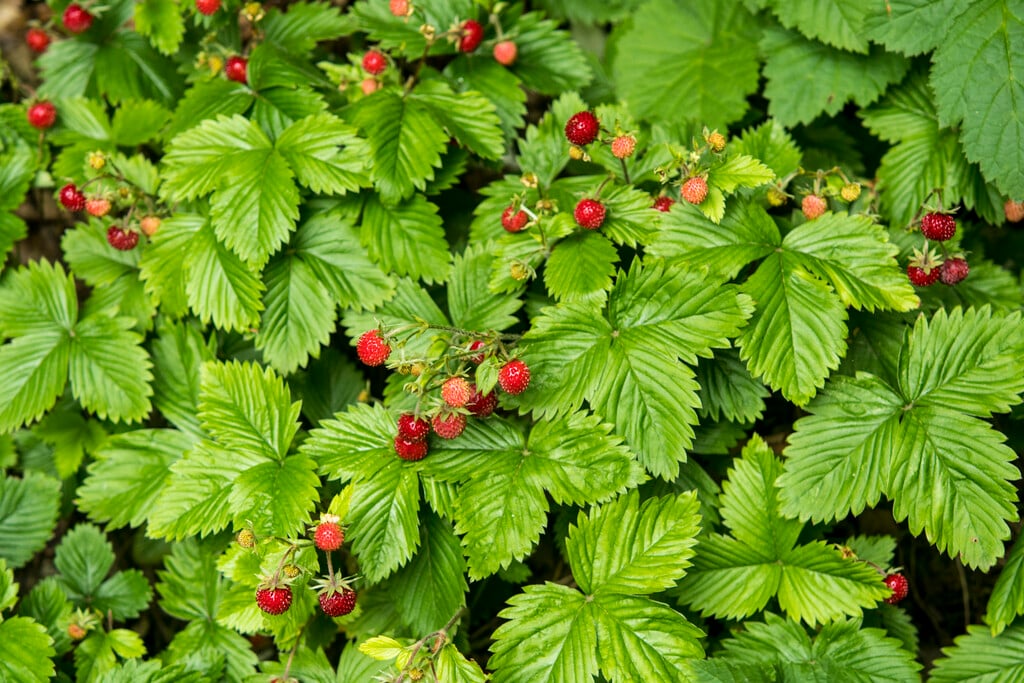Fragaria vesca (F)
alpine strawberry
A stoloniferous, spreading perennial forming rosettes of 3-palmate leaves, bright green leaves with toothed leaflets. In late spring it bears cymes of white flowers that are followed by red fruit 1cm long
Size
Ultimate height
0.1–0.5 metresTime to ultimate height
1–2 yearsUltimate spread
0.5–1 metresGrowing conditions
Moisture
Moist but well–drainedpH
Acid, Alkaline, NeutralColour & scent
| Stem | Flower | Foliage | Fruit | |
| Spring | White | Green | ||
|---|---|---|---|---|
| Summer | Green | Red | ||
| Autumn | Green | |||
| Winter |
Position
- Full sun
Aspect
North–facing or East–facing or South–facing or West–facing
Exposure
Sheltered Hardiness
H6Botanical details
- Family
- Rosaceae
- Native to GB / Ireland
- Yes
- Foliage
- Semi evergreen
- Habit
- Trailing
- Genus
Fragaria are stoloniferous perennials with leaves composed of three leaflets, and rounded white or pink flowers followed by edible red fruits
- Name status
Correct
- Plant range
- Europe
How to grow
Cultivation
Grow in fertile, moist but well-drained soil. Can be grown in a wide range of soils, but thrives in alkaline soils. Tolerant of partial shade; for best fruiting grow full sun. Good for the edge of informal borders or as a ground cover; can spread. Suitable for container cultivation
Propagation
Remove and transplant runners. Propagate by seed sow at 13-18°C in spring
Suggested planting locations and garden types
- Cottage and informal garden
- Patio and container plants
- Wildflower meadow
- Wildlife gardens
- Ground cover
- Edible fruit
Pruning
Remove excess runners
Pests
May be susceptible to aphids, slugs, glasshouse red spider mite and vine weevil
Diseases
May be affected by strawberry viruses and root rot. Fruit prone to grey moulds
Love gardening
Sign up to receive regular gardening tips, inspiration, offers and more
View our Privacy Policy
Get involved
The Royal Horticultural Society is the UK’s leading gardening charity. We aim to enrich everyone’s life through plants, and make the UK a greener and more beautiful place.
